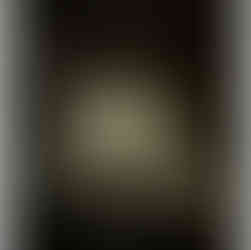Moholy-Nagy: Future Present at the Los Angeles County Museum of Art
- artandcakela
- Mar 4, 2017
- 3 min read

Moholy-Nagy: Future Present. Los Angeles County Museum of Art. photo © Peter Cox, Eindhoven, The Netherlands.
Moholy-Nagy: Future Present
Los Angeles County Museum of Art
By Jody Zellen
Through June 18th
László Moholy-Nagy (1895–1946) was an influential artist and educator— first as a member of the German Bauhaus and later as the director of the Institute of Design in Chicago. He was an inventive artist who was able to transcend boundaries, extending his vision and unique way of working across a wide range of materials and mediums. He created paintings, drawings, photographs, photograms, photomontages, films, sculptures and set designs, in addition to working as a graphic and book designer. Moholy-Nagy was influenced by Constructivism and explored the intersection of geometric and architectural forms using a limited palette of shapes and colors in his works on paper and paintings.

Moholy-Nagy: Future Present. Los Angeles County Museum of Art. photo © Museum Associates/LACMA.
Exquisitely installed at Los Angeles County Museum of Art, Future Present celebrates the formal properties of his output as the exhibition design draws viewers into and through the space luring them from room to room through the placement of brightly colored paintings that glow like gems on the deep gray walls. One follows an angled corridor toward a glistening golden painting, passing beautifully composed photographs and collages to arrive at Moholy-Nagy’s plexiglas sculptures. An interesting way to experience the exhibition which features over 300 works is to traverse the rooms going forward and back, making connections among the various types of work and ignoring the linear chronology.

Moholy-Nagy: Future Present. Los Angeles County Museum of Art. photo © Museum Associates/LACMA.
Through the evolution of the work, one sees the development of an artist with a keen wit, a sense of humor and compassion as well as an artist willing to take chances— Moholy-Nagy embraced experimentation. The number of exceptional works is awe-inspiring. Beginning with Cubist Cityscape, 1920/21 it is possible to follow an urban theme throughout the exhibition as even his abstract paintings can be seen as architectural. Other recurring themes are hands and silhouettes, as seen in numerous photograms and photo-montages from 1925 and 1926. Although Moholy-Nagy’s films and photographs were more documentary in form, they still exhibited a keen sense of composition that led the eye across the work from edge to edge. The inclusion of Moholy-Nagy’s graphic design —posters and book covers— illustrates his visual consistency as well as the expansiveness of his practice. A rare treat is the presentation of the Room of the Present, conceived of in 1930 but not realized until 2009. As described in the LACMA press materials, this immersive installation “exemplifies Moholy-Nagy’s desire to achieve a Gesamtwerk (total work) that would unify art and technology with life itself.”
That Moholy-Nagy embraced technology and was open to experimentation made him a truly versatile, multi-disciplinary artist. As a teacher, he asked his students to see themselves as “designers and craftsmen who were interested in new ideas as well as useful products” and it is evident that what he said to his students also applied to himself. The exhibition concludes with a series of plexiglas sculptures suspended from the ceiling. These enigmatic / transparent works cast evocative shadows on the walls and exemplify Moholy-Nagy’s fascination with light and shadow as well as his desire to make works that integrated art and technology. Moholy-Nagy’s influence remains integral to artists and students today as the scope of his oeuvre was monumental.
#losangeles #california #art #painting #losangelesmuseum #geometric #InstituteofDesignChicago #shapes #MaholyNagy #LosAngelesArts #losangelesart #lacma #contemporaryart #southerncalifornia #LosAngelesArtists #JodyZellen #setdesign #photography #bookdesign #artgallery #color #losangelescountymuseumofart #gallery #museum #Bauhaus #ArtandCakeLA #fineart #artists #artist #arts #photomontage #artreview #artmuseum #Constructivism #sculpture #architectural #FuturePresent #ArtandCulture #graphicdesign #museumart #form #film #photogram #worksonpaper #palette #drawing






































